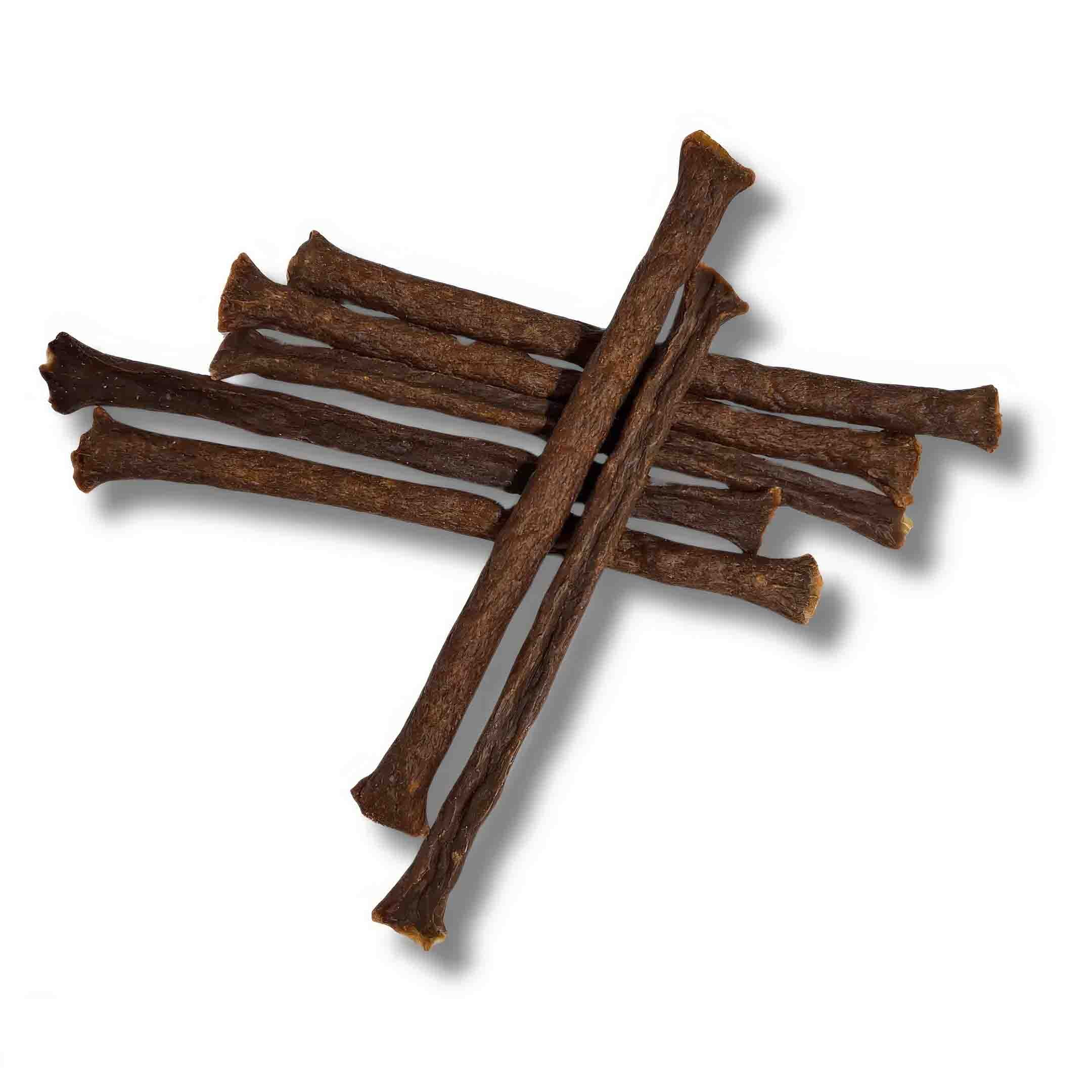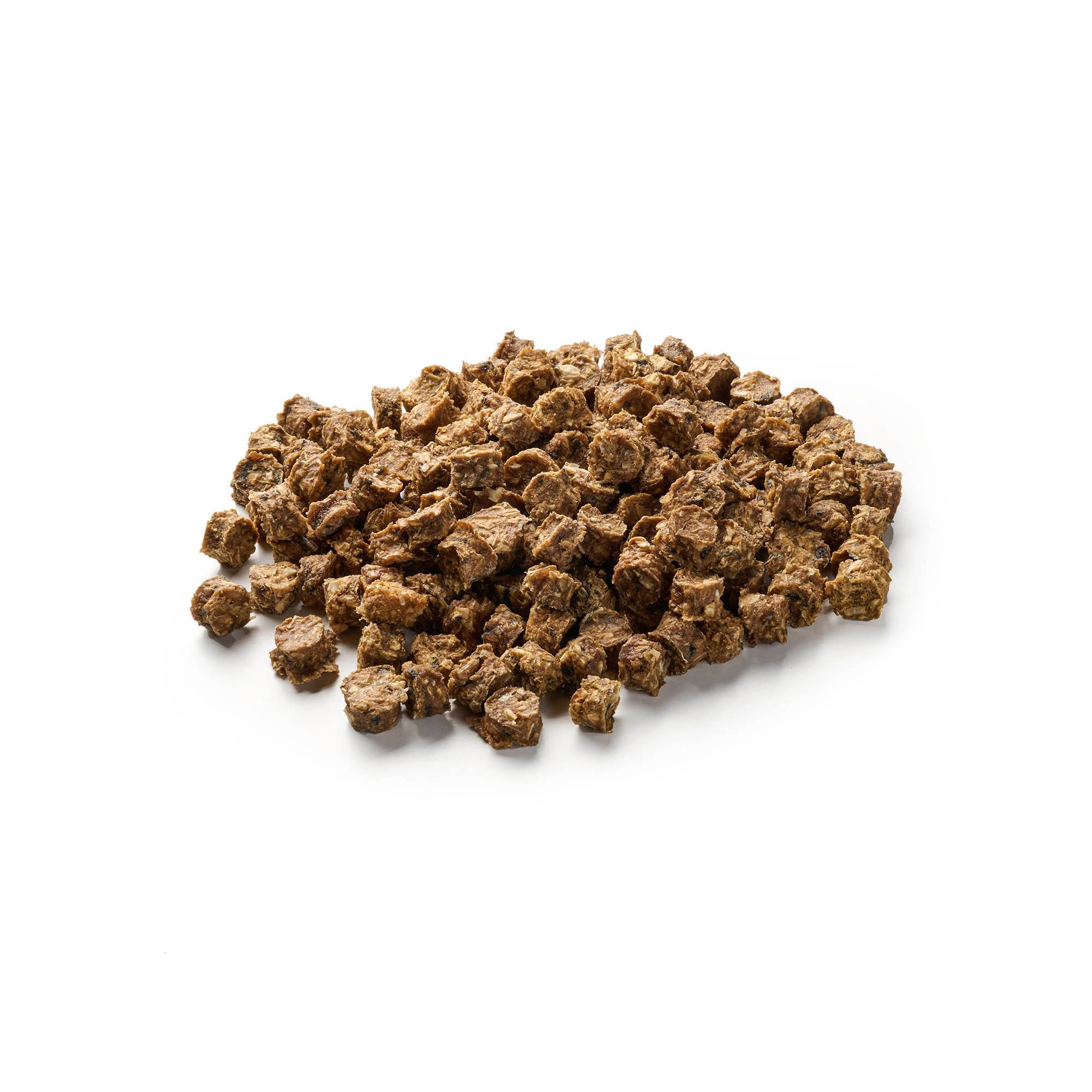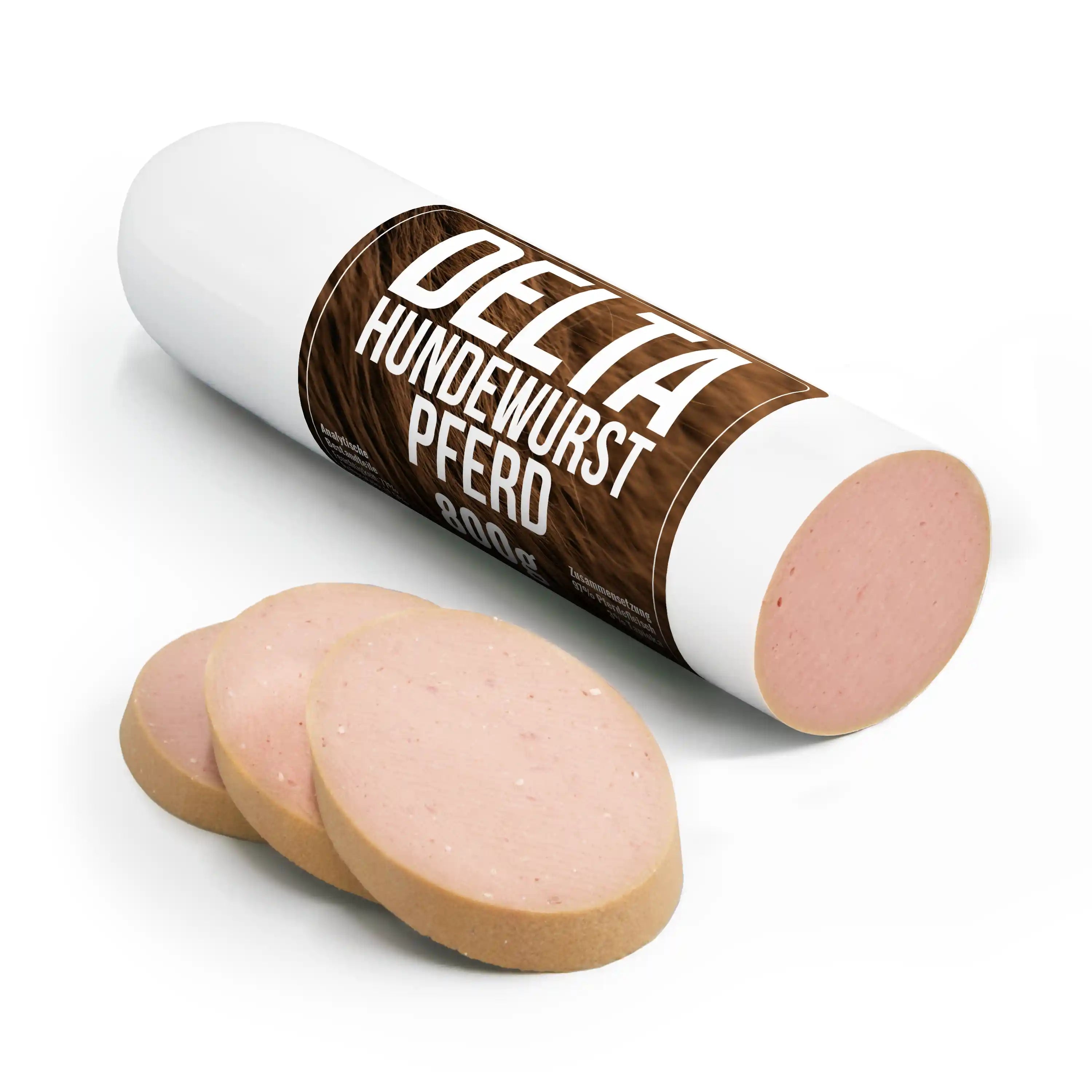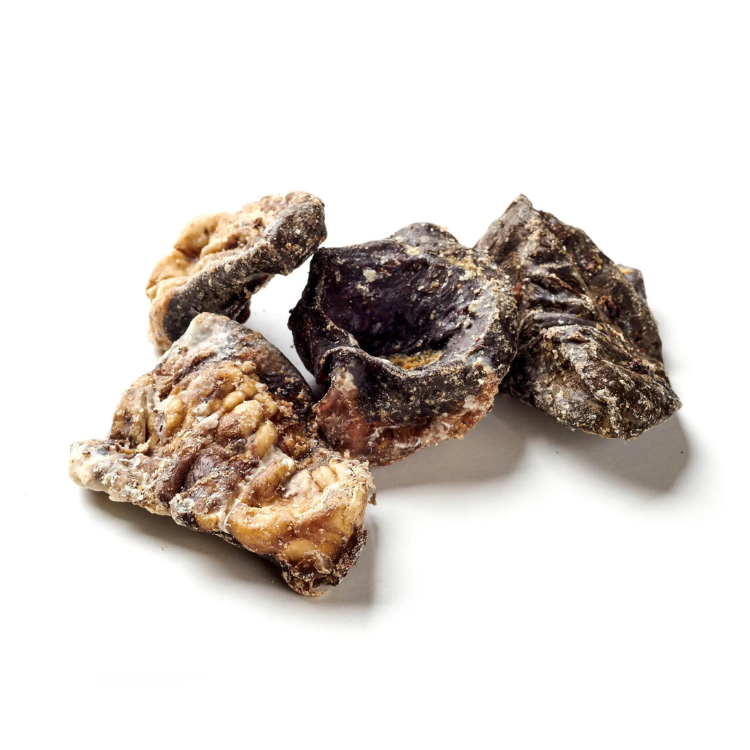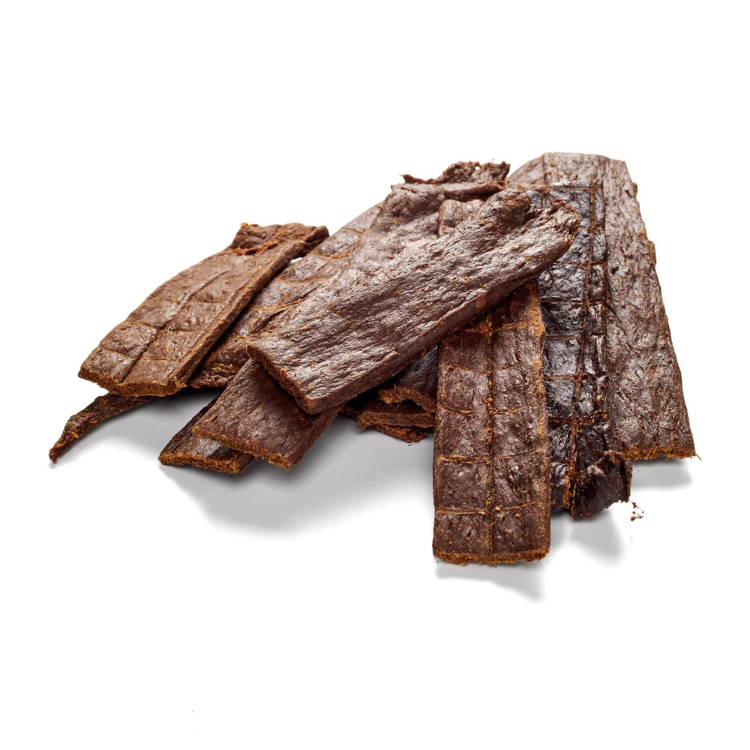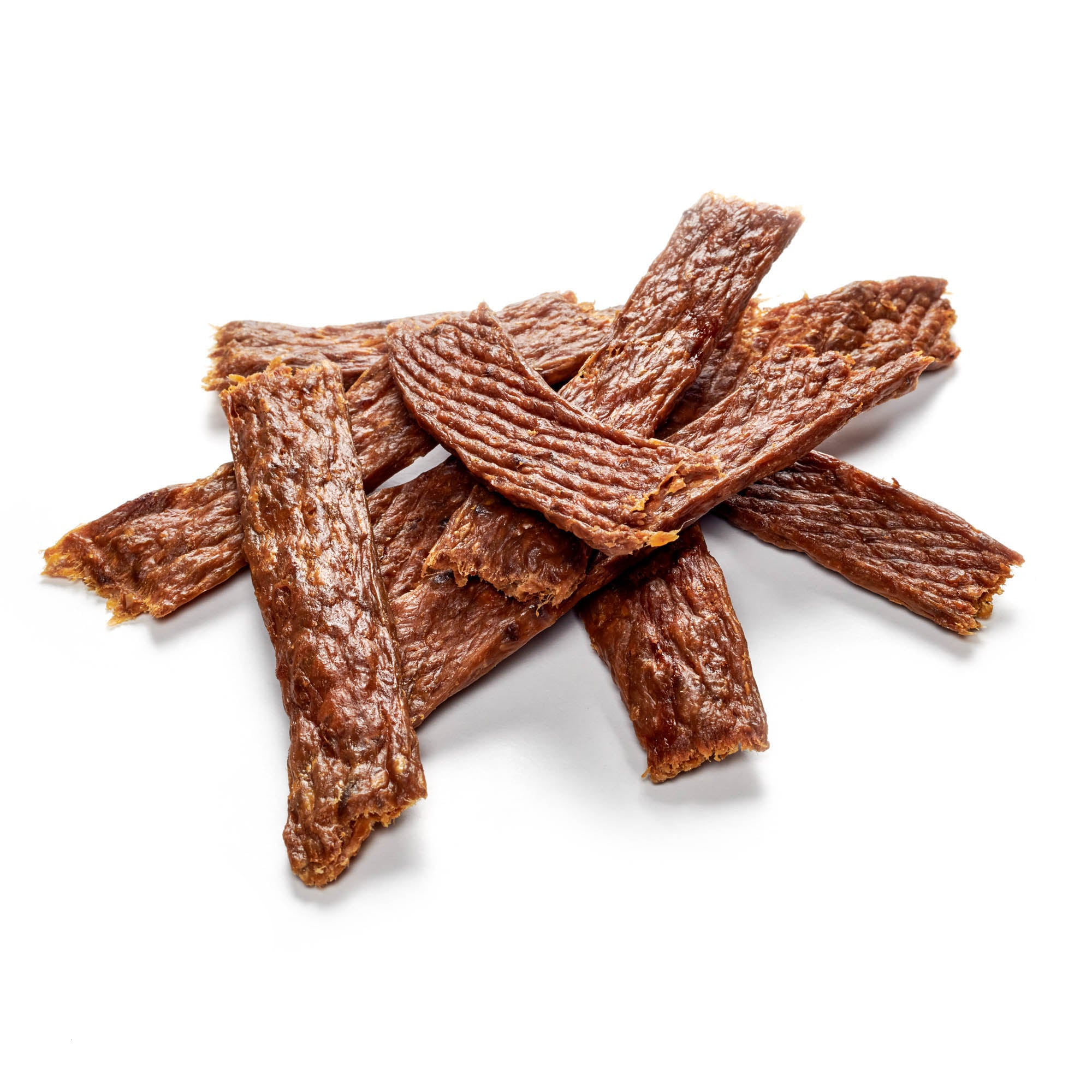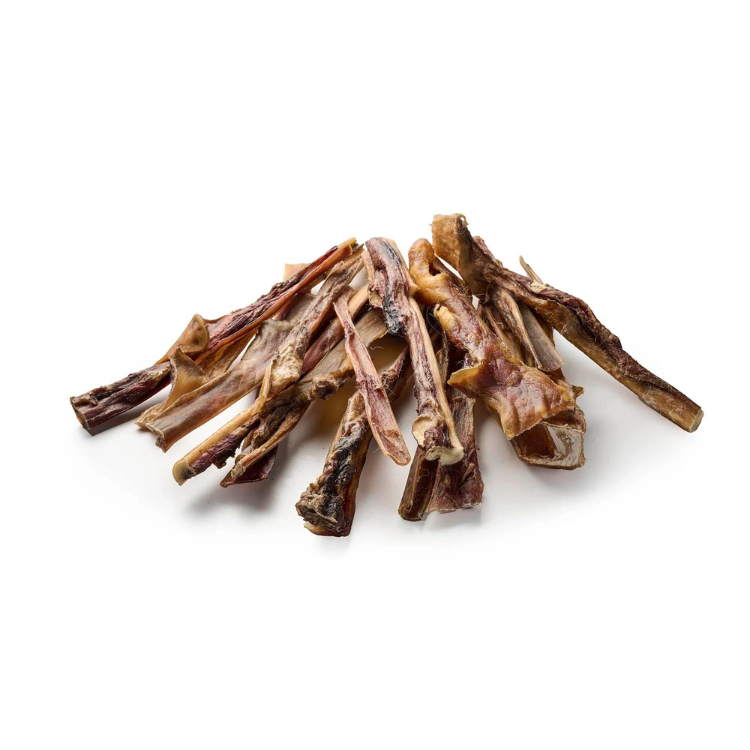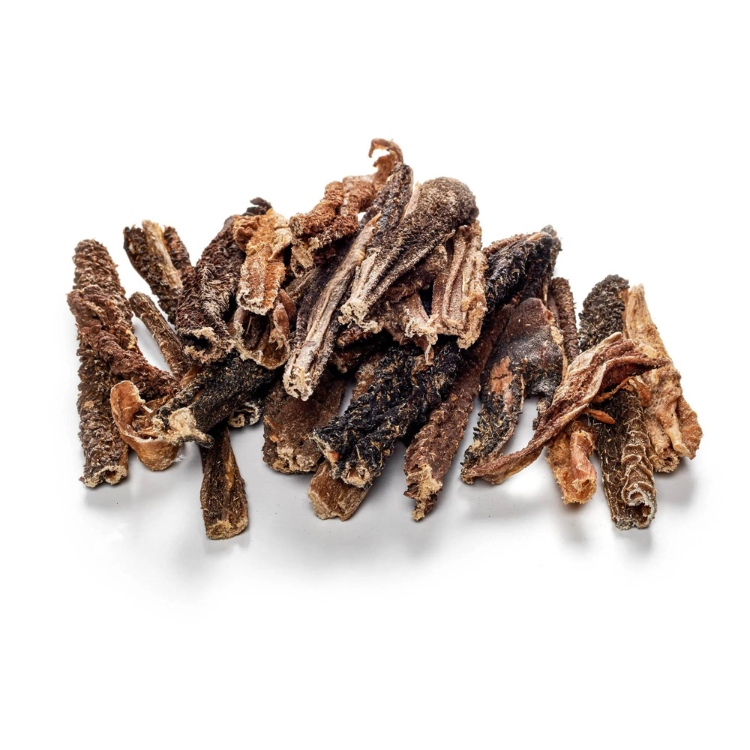
Bullmastiff
Share
The Bullmastiff is a guard and watchdog and is a mastiff-like dog. The powerful giants are listed as dogs and became famous as police dogs in the USA and Great Britain. Keeping them requires a good understanding of dogs. With the right training, however, the Bullmastiff can also be kept as a family dog.
Content: Bullmastiff
- profile
- Special features
- Nutrition
- Health and care
- Origin & History
- The right accessories
- Conclusion
Dog chews available for happy and satisfied four-legged friends!
Bullmastiff - Profile
- Character: powerful, persistent, active, reliable, lively, alert, loyal
- Size: large
- Height: 61-70cm
- Weight: 40-60 kg
- Life expectancy: 10-12 years
- Coat type: short, close-fitting coat
- Colour: brindle, fawn, red
- Special features: List dog
- FCI Group: Pinschers and Schnauzers – Molossers – Swiss Cattle Dogs
Bullmastiff - Special characteristics
The Bullmastiff is a massive dog that can quickly instill fear in those around him. Despite his great strength, he is a very agile dog with a symmetrical appearance. He has short, hard, close-fitting fur and a large muzzle with a black mask. The coat color ranges from red to brown tones. However, a brindle color is also acceptable for Bullmastiffs. The small V-shaped ears hang down and complement the hanging lips.
Even though the Bullmastiff is a watchdog, it barks surprisingly rarely. The furrowed forehead is a characteristic feature of the dog, which allows it to express increased attention and concern. Its watchful and active temperament means that consistent training and clear commands are essential. A beginner should not approach this dangerous dog under any circumstances. On the other hand, its classification as a listed dog is often criticized. With the appropriate knowledge, the dog can be trained to be the loving animal it is. This brings out its intelligent and calm character. Despite everything, the Bullmastiff has a calm, almost stoic nature and wouldn't hurt a fly.
A Bullmastiff needs sufficient exercise and should be taken for long, extensive walks at least daily.
Bullmastiff - What should be considered regarding nutrition?
The diet of the Bullmastiff requires a wallet appropriate to the dog's size and strength. The food should be of high quality and consist of at least 70% meat . You can also give small amounts of fruit, vegetables and grains. After feeding, Mastiffs must rest for 2-3 hours to avoid gastric torsion. As with all dogs, the amount of food depends on the dog's size, age and activity level. You should make sure that you do not give the dog too much food. The molosser-type dogs can also put on too much fat as a result. This damages the dog's bone structure and can lead to health complications. Both wet and dry food are suitable. Of course, you can also feed the dogs using the BARF method. With biologically appropriate raw feeding, the dogs are only given raw meat, vegetables and fruit. Vitamin and mineral supplements are also fed. A balanced diet is essential when keeping large animals and should be discussed with the vet if in doubt.
High-quality dog chews for your faithful companion can be found here!
Bullmastiff - Health and Care
The Bullmastiff's coat requires little attention. The short coat should be brushed at least once a week. Skin folds should be checked regularly to prevent inflammation and parasites. The eyes and ears should also be checked regularly. Relevant chews are suitable for dental care . The dog should only be bathed with shampoo in exceptional cases to avoid damaging the skin's natural protective function.
Due to their size, the dogs are prone to dysplasia in the musculoskeletal system and should therefore not climb stairs. Heart problems are also a common occurrence in these powerful dogs. As with all animals, a healthy diet and sufficient exercise are two of the most important elements in maintaining the health of your companion.
Bullmastiff - Origin & History
The Bullmastiff is a very young breed of dog and is descended from the Old English Mastiff and the Old English Bulldog. A little bit of Bloodhound is also said to have been included in the mix. The breed's origins lie in the 19th century and are well documented. At first, the dogs were mainly used by gamekeepers to fight poachers. This required a dog with a good nose and a high level of alertness, as well as strength to catch the offenders. Poaching was punishable by death in England at the time. At the turn of the century, the dog was increasingly used in police service. On Christmas Eve 1924, the new breed of dog was recognized by the Kennel Club. It was not until 1955 that the FCI, as the world association, followed suit and made the dogs an officially recognized breed. In the last century, breeders have concentrated primarily on increasing the dogs' stimulus threshold and making them suitable family and companion dogs. These efforts have paid off and have led to the dog even being used as therapy dogs today.
Bullmastiff - The right accessories
To keep a Bullmastiff you need a very sturdy leash, a collar or harness and a muzzle. Only with these items can you walk the dog. A brush, bowl and basket complete the basic equipment.
You can also get a variety of toys to keep your dog entertained. It is also a good idea to visit a dog sport and learn more about what your dog likes to do.
Conclusion
The Bullmastiff is an impressive guard and watchdog that impresses with its strength, endurance and loyalty. Despite its imposing appearance, with the right training and sufficient exercise, it can be a loving family dog. Its care is straightforward, but its health requires special attention, especially with regard to dysplasia and heart problems. A balanced diet is essential to support its health. Originally known as a gamekeeper and police dog, the Bullmastiff has now also established itself as a companion and therapy dog. With the right equipment and an experienced owner, this loyal and watchful dog can be a wonderful companion.
Treat your dog to something special with our chew products!

